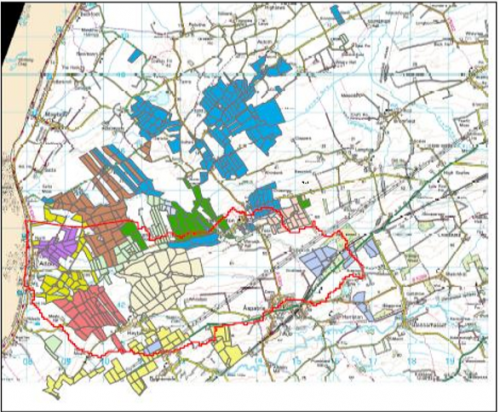Ref: CSFF020006
Lead: Rosie, rosie@westcumbriariverstrust.org
Group members: 12
Length of agreement: 5
Area of group (Hectares): 1908
One of the key priorities and the only one named specifically for the Crookhurst catchment from the statement of priorities is to select options to reduce flooding in Westnewton. By using options such as buffer strips, beetle banks, overwintering stubble, overwinter crops, reed bed and woodland creation and creation of wet grassland for breeding waders to name a few the surface run-off could be reduced enough to lessen the risk of flooding to Westnewton.
There are also capital items such as swales, sediment ponds and silt filtration dams which could be used to reduce flooding. Most of these options would also improve water quality by controlling the source and movement of potential pollutants such as nutrients, sediment, faecal bacteria and pesticides. And many of the options also help increase biodiversity, improve landscape features and provide priority habitats especially when in buffer strips next to ponds, ditches and watercourses.
Many options which members are keen to deliver to reduce flooding also increase biodiversity by providing habitats like reedbed, woodland and arable field margins. By working together as a group the members hope to connect fragmented areas of such priority habitat and many options bring multiple benefits. For example managing willow scrub which helps reduce pollutant runoff, will help the willow tit and introducing lapwing plots near extensive grassland will help breeding waders and potentially hares. Sowing nectar mixes, increasing flowers on grassland and managing key farm habitats such as hedgerows also help with the year round survival of pollinators, birds and wildlife and farmers in this area are keen to maintain and enhance such habitats, especially as they also reduce surface run off and help to mitigate climate change.
There are no listed historic sites within the Crookhurst catchment but there are traditional farm buildings and management of these may form part of an application. There are some broadleaf woodlands to be managed within the area but new woodland planting would link many of the top priority Countryside Stewardship objectives, such as increasing biodiversity, reducing diffuse pollution and slowing floodwaters. these are options which many group members are considering.

